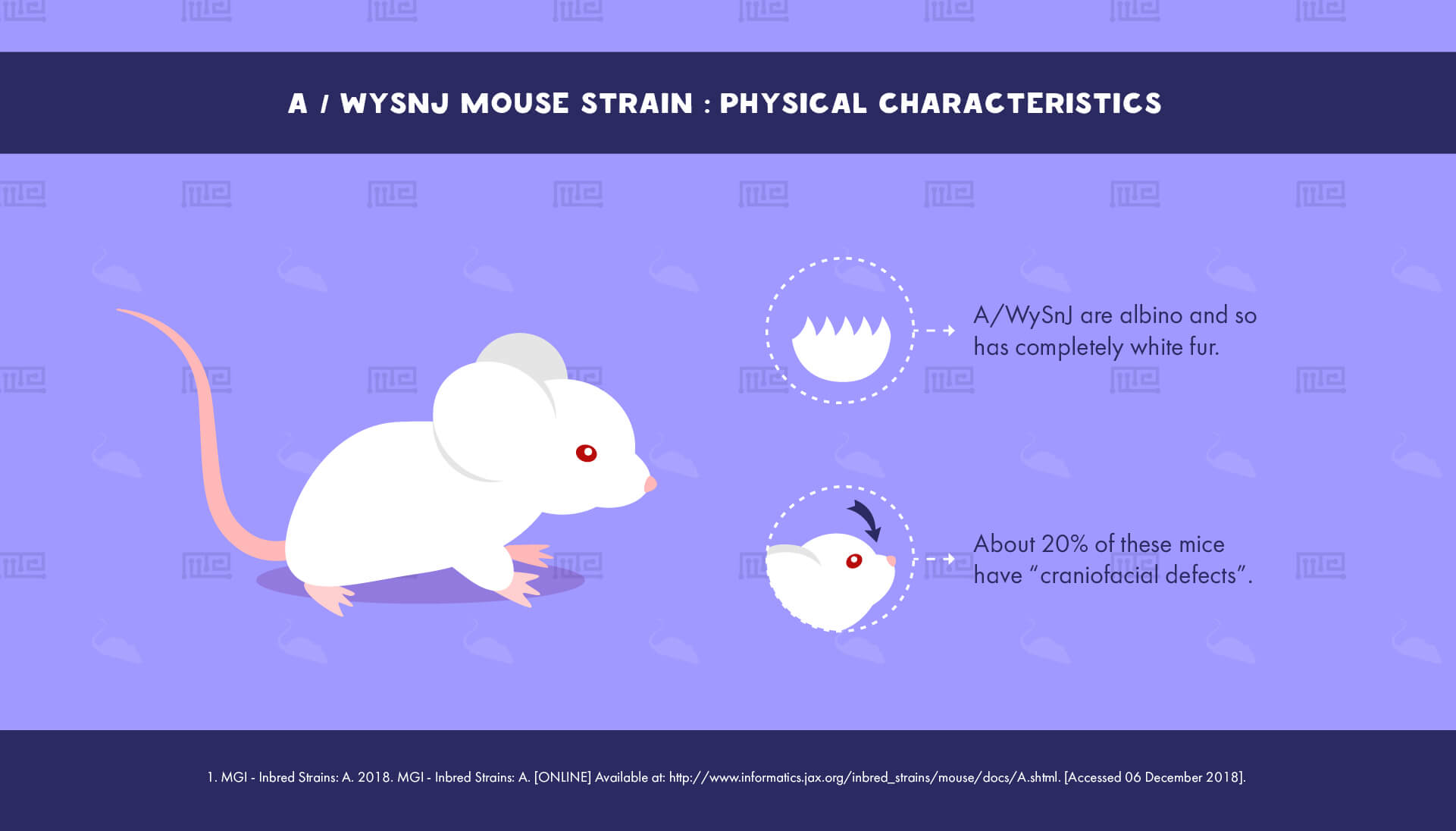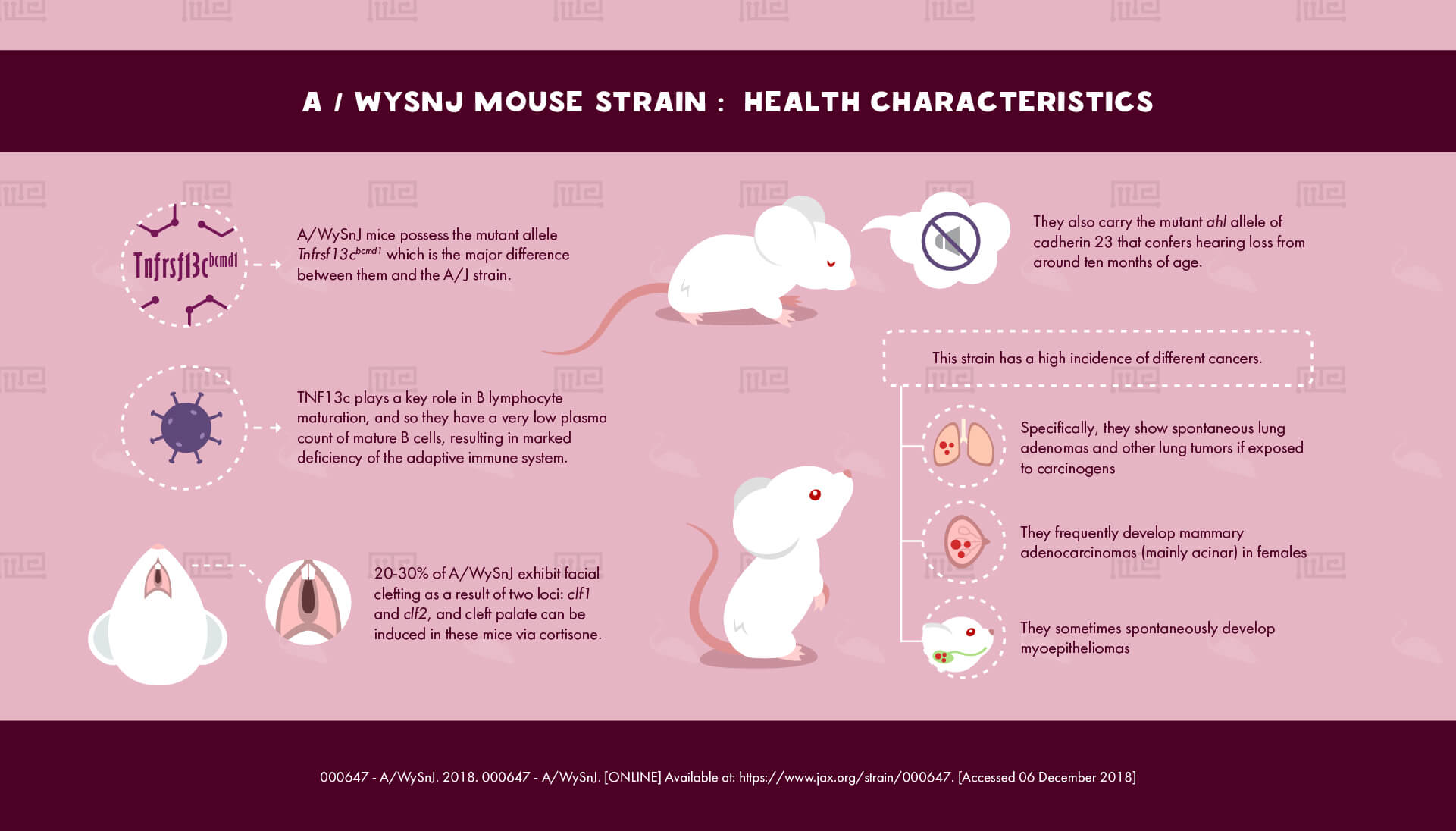Overview
A/WySnJ, also known as “A Wooley Snell”, is a mutant strain of mouse that exhibits immunodeficiency.[1]
History
A/WySnJ is a member of the A family of strains, all originating from a cross carried out by Strong in 1921 between a Cold Spring Harbour and a Bagg albino. A/WySnJ became genetically distinct from the other A strains at some point during the 1930s. The strain passed from Strong to Grunenberg, then Wooley and finally to Snell in 1951.[2]
Physical Characteristics of A/WySnJ Mouse Strain
Like all other members of the A family of strains, A/WySnJ is albino and so has completely white fur. Around 20% of these mice have “craniofacial defects” (see below).[2]
Behavioral Characteristics & Handling
The Jackson Handbook describes the A/WySnJ strain as “nice, fat, calm and clean coated”,[3] which suggests that these mice are quite docile. Researchers then should have confidence in ease of handling with this strain and could opt for it over others if high docility is required.
Health Characteristics of A/WySnJ Mouse Strain
The major difference between A/WySnJ mice and the more common A/J strain is the former’s possession of the mutant allele Tnfrsf13cbcmd1. A retrotransposon insertion into tumor necrosis factor (TNF) 13c has resulted in the expression of a non-functional fusion protein.
TNF13c plays a key role in B lymphocyte maturation, and so A/WySnJ has a very low plasma count of mature B cells, resulting in marked deficiency of the adaptive immune system. This mutation does not affect T cells or cells involved with non-adaptive immunity.
This strain has a high incidence of a number of different cancers. Specifically, they show spontaneous lung adenomas and other lung tumors if exposed to carcinogens, as well as frequent mammary adenocarcinomas (mainly acinar) in females. Sometimes spontaneous myoepitheliomas are observed.
20-30% of A/WySnJ exhibit facial clefting as a result of two loci: clf1 and clf2, and cleft palate can be induced in these mice via cortisone. Like many inbred strains, they also carry the mutant ahl allele of cadherin 23 that confers hearing loss from around ten months of age.[1]
Major Experimental Uses
Their B cell deficiency makes this strain of especial interest to researchers working on immune deficiency and immunology in general. These mice can also be applied to the study of cancer, hearing loss and the development of craniofacial defects.[1]
References
- 000647 – A/WySnJ. 2018. 000647 – A/WySnJ. [ONLINE] Available at: https://www.jax.org/strain/000647. [Accessed 06 December 2018].
- MGI – Inbred Strains: A. 2018. MGI – Inbred Strains: A. [ONLINE] Available at: http://www.informatics.jax.org/inbred_strains/mouse/docs/A.shtml. [Accessed 06 December 2018].
- The Jackson Laboratory Handbook on Genetically Standardized Mice. 6th ed. 2009. [ONLINE]. Available at: http://jackson.jax.org/rs/444-BUH-304/images/JAX%20Handbook%20Genetically%20Standardized%20Mice.pdf.


